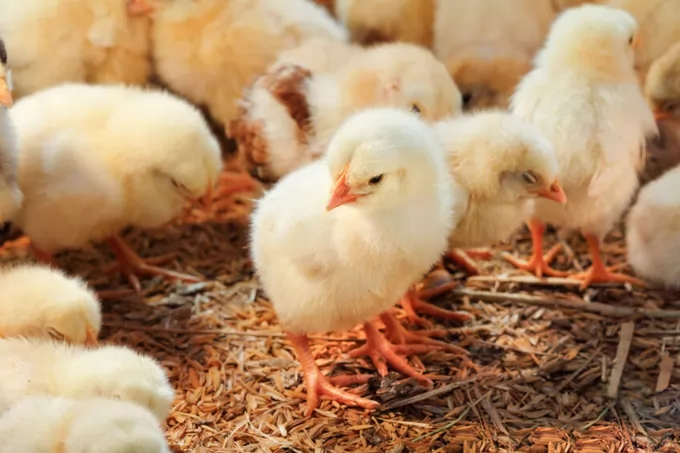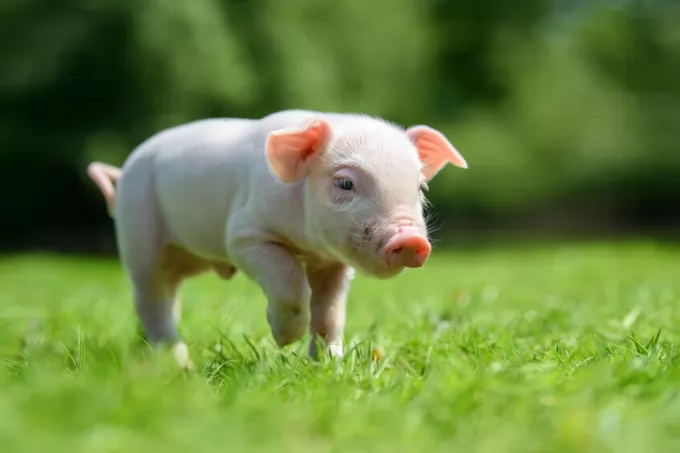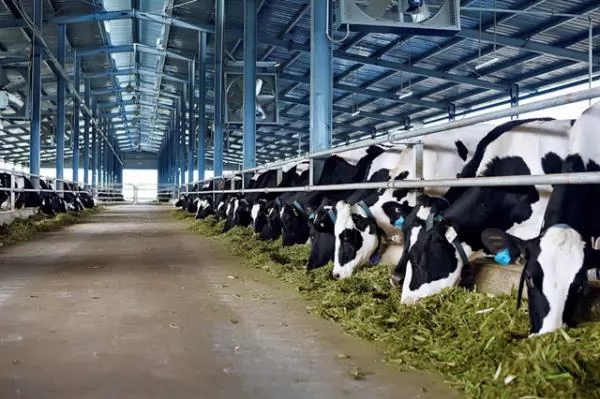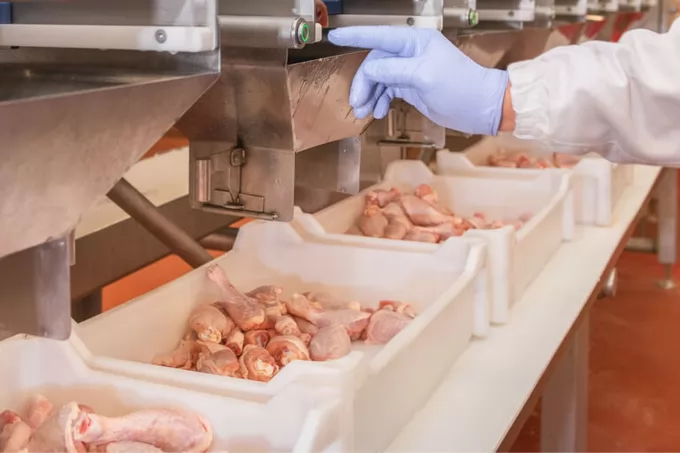Greater protection needed for EU poultry sector

Birthe Steenberg, AVEC's Secretary General: “Our [poultry] sector operates under the highest standards of animal welfare, biosecurity and sustainability in the world. Photo: Canva.
(VAN) European policymakers have been urged to protect the EU’s poultry sector amid the threat of growing international trade challenges.
The Association of Poultry Processors and Poultry Trade in the EU (AVEC) said there was a pressing need for a stronger European approach to trade and food security in light of the Ukraine accession talks and controversial Mercosur deal.
Speakers at its ‘The importance of trade in a changing world’ conference in Bruges, Belgium, focused on the increasing global trade complexities faced by the European poultry sector.
Gert Jan Oplaat, AVEC president, highlighted the Strategic Dialogue for Agriculture, saying food and agricultural production played a strategic role in the new geopolitical context as an essential part of European security. “We must ensure its resilience in the face of global challenges. In a world filled with conflict and uncertainty, food has become an unmatched asset, a strategic weapon, that the EU must leverage wisely. To that end, EU poultry production is essential for maintaining self-sufficiency in the EU and securing our food supply,” he said.
Professor Rob de Wijk of Leiden University highlighted the complexities of the global food system, noting that it is built on intricate interdependencies that are progressively at risk: “Protectionism, unilateralism and economic warfare are now threatening the global food system,” he said, adding that the Zero Hunger objective of the UN 2030 Agenda for Sustainable Development is unlikely to be met.
“Food security is not merely an agricultural issue but a crucial geopolitical concern. We simply cannot reduce the output of a sector if we want autonomy,” he added.
Ensuring fair trade for the EU poultry sector
Nan-Dirk Mulder from Rabobank provided an outlook for the global and European poultry sectors, noting the growing demand for poultry meat worldwide: “Overall global animal protein demand is expected to rise by 14% in the next 10 years. Demand for poultry is predicted to grow by 22% due to its lower price point, cultural preferences and higher sustainability in production.”
Meanwhile, Birthe Steenberg, AVEC’s Secretary General, noted: “Our sector operates under the highest standards of animal welfare, biosecurity and sustainability in the world, yet we face competition from third countries with much lower requirements.”
AVEC reaffirms the EU poultry sector’s commitment to sustainable, innovative and transparent production that delivers high-quality, accessible poultry meat and aligns with consumer expectations. However, “without reciprocity in trade agreements and a clear labelling of origin (in HORECA and further processed products), European poultry producers will fail to compete with external markets that do not adhere to the same rigorous standards,” Steenberg stated.
Call to action for EU’s policymakers
As we look ahead to the 2024-2029 European legislative term that just begun, AVEC declares its support to the recommendations of the Strategic Dialogue for Agriculture for greater coherence between the Commission’s trade and sustainability policies, reviewing the current approach to conduct negotiations on agriculture and agri-food, recognising the strategic relevance of agriculture and food products in trade negotiations and stronger leadership in the reform of the global trade policy framework.
The association calls for an enhanced focus on cooperation and robust policy decisions moving forward, based on reciprocity in trade agreements, which reflect the EU’s high standards and support EU producers.
“The EU poultry sector is a critical part of Europe’s food self-sufficiency. We urge policymakers to defend it against unfair competition and ensure the EU remains a global leader in sustainable food production,” concluded Oplaat.
The call follows the publication earlier in September of a report from the EU Council that said the European poultry sector should focus more on quality and profitability, meet consumer demands as well as export destinations and move to further integration in order to maintain its strong sectoral position.
The paper highlighted that the European Union is one of the world’s largest poultry meat producers, and together with the pig sector, they are the biggest animal producing sectors in the EU, employing around 300,000 people directly and indirectly and producing around 13.4 million tonnes. But it also recognised significant trade issues.
The EU self-sufficiency rate exceeds 110%. Since 2001, the trade balance of the EU poultry sector has been positive both in volume and value, and the EU exports twice as much poultry meat as it imports.
The main products exported are those where the EU is more competitive globally and where there is weaker demand domestically (wings, legs, and offal). EU poultry imports, mostly supplying foodservice and food processors, recovered after Covid-19. In addition, autonomous trade measures provided to Ukraine with duty-free quota-free market access (valid until June 2025) have led to a significant increase in imports of poultry meat in recent years.
According to the latest EU agricultural outlook by 2035, imports are likely to have increased only slightly compared to current high levels, to a level of 910,000 tonnes. In recent years, the poultry sector has faced numerous challenges. Various epidemics, Brexit, unprecedented increases in energy, feed and input prices, and cheaper import products have also caused a serious competitive disadvantage to EU producers. Moreover, poultry meat production in the EU has to meet high environmental standards and provisions, which makes production more expensive.
Despite all the challenges, the long-term shift in meat consumption towards poultry continues to strengthen. The EU short-term outlook anticipates that the increase in EU per capita poultry meat consumption of 3% in 2023 continues also in 2024, therefore the per capita consumption of poultry could grow by an additional 2%, while consumption of other meats stays stable or declines.
With favorable meat-to-feed price ratios compared to ruminants, together with a short production cycle, poultry producers can quickly respond to market signals while taking on board rapid improvements in genetics, animal health, and feeding practices.
On the basis of the regulations stemming from the EU Green Deal and Farm to Fork Strategy, new environmental and animal welfare obligations have to be respected by animal husbandry producers, including the pig and poultry sectors.
The report adds that the poultry sector also has to deal with the fact that avian flu will become a permanent disease in the future and its prevention will raise the cost of production.
Trade policies
The European pig and poultry sectors are world leaders in animal welfare, environmental sustainability, food safety, quality and traceability. This could be favourable for markets’ changing consumption preferences, quality needs and social expectations.
Hence, the cost of production is higher for European pig and poultry producers than for its competitors. For the future of these sectors, new trade deals and barrier-free market access in export destination countries play an important role in diversifying outlets for these sectors.
It is of fundamental interest that, in addition to promoting fair cooperation, these instruments also serve the sustainability of the sectors.
European pig and poultry growing export rates have been capped by trade restrictions at its main export destinations because of animal diseases (outbreaks of ASF and highly pathogenic avian influenza), the non-recognition of regionalisation by trade partners or protectionist measures against imports.
CAP reform
The pig and poultry sectors are not eligible for CAP coupled income support. Instead, they can benefit from investment support, or other types of support related to animal welfare and antimicrobial resistance. The current CAP increases subsidiarity by allowing each Member State to establish its own Strategic Plan based on national needs and structured around the 9 specific objectives, cover planned interventions financed from both CAP funds and set quantified targets through indicators for the entire programming period.
HD
(PW)
Maybe you are interested

Insects: A turnkey solution to feed sustainability
In December 2024, the Regulation on Deforestation-Free Products (EUDR) is anticipated to take effect, aiming to reduce deforestation and forest degradation.

Tech important to promoting dairy industry
HÀ NỘI — Việt Nam has significant room to promote the dairy industry with the application of technology in farming and processing to establish a value chain, given the rising demand for dairy products in the domestic and global markets...

Poland's poultry industry has had a record year
Poland's poultry industry experienced an outstanding year in 2024 as monthly production reached a record level, the National Chamber of Poultry and Feed Producers (KIPDiP) revealed.





